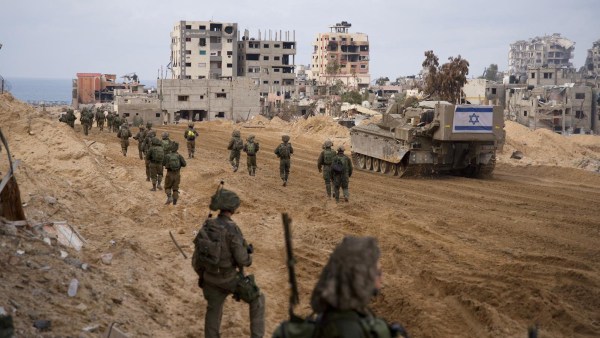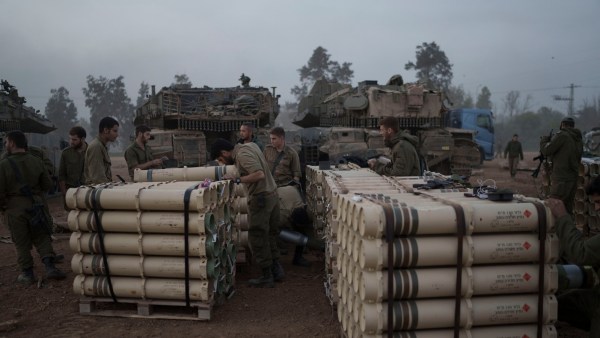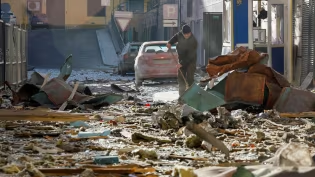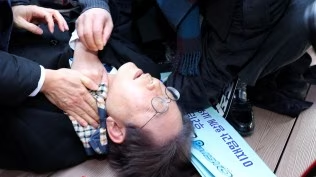Fighting between Hamas and Israel rages on despite partial troop withdrawal
Israel said on Tuesday its troops had killed dozens of militants in the north of the Gaza Strip in the past day, while its aircraft and tanks stepped up strikes in the south of the Palestinian enclave.
Residents said heavy fighting was also raging in central areas, citing shelling by Israeli tanks of parts of the Al-Bureij refugee camp.

The actions took place after Israel announced plans to pull back some troops, signalling a new phase in the nearly three-month-long war against Hamas amid global concern over the plight of Gaza residents.
Israeli bombardments have reduced much of the territory to rubble, killed nearly 22,000 Palestinians, and engulfed its 2.3 million residents in a humanitarian disaster. Israeli officials say the offensive has many months to run.
In its daily briefing, the Israeli military said that in the past day its forces had targeted militants in Gaza City in the north of the enclave and in unspecified locations along the Mediterranean coast.
“In Jabaliya area, troops killed dozens of terrorists, among them those who attempted to plant explosive devices, others who operated drones and those who were armed identified driving toward the forces,” the military said.
 Israeli soldiers operate in the Gaza Strip amid the ongoing conflict between Israel and the Palestinian Islamist group Hamas. (Reuters)
Israeli soldiers operate in the Gaza Strip amid the ongoing conflict between Israel and the Palestinian Islamist group Hamas. (Reuters)
Troops also seized weapons and dismantled rocket launchers in Khan Younis in the south and in a United Nations school in Al-Bureij, Israel’s military said.
Gaza residents said Israeli war planes and tanks stepped up bombardments of the eastern and northern areas of Khan Younis, where tens of thousands of displaced Palestinians have sought refuge after being forced from their homes elsewhere in the densely-populated territory.
In another sign of the war spreading beyond Gaza’s borders, Israeli soldiers mounting a raid in the occupied West Bank killed four armed militants who had fired at them from a house in the Palestinian village of Azzun, the military said.
An Israeli official said the situation on the border with Lebanon, where Israeli forces and Lebanese Hezbollah fighters have exchanged artillery fire almost daily, would not be allowed to continue. “This coming six-month period is a critical moment,” the official said.
At a house in the centre of Khan Younis, medical teams retrieved the bodies of two women killed in an Israeli air strike on Tuesday morning, health officials said.
Hamas and Islamic Jihad said in separate statements they had fired mortar bombs and anti-tank rockets against Israeli forces in Khan Younis and were stopping them advancing to the western area. Tanks have been stationed east, north and at the centre.
 Israeli soldiers from the artillery unit store tank shells in a staging area at the Israeli-Gaza border in southern Israel. (Reuters)
Israeli soldiers from the artillery unit store tank shells in a staging area at the Israeli-Gaza border in southern Israel. (Reuters)
Hamas’ armed wing on Monday claimed to have killed 15 Israeli soldiers after triggering an explosive minefield east of the Tuffah neighbourhood in Gaza City.
Hamas also showed its continued ability to target Israel after more than 12 weeks of the war, firing rockets at Tel Aviv.
New phase
The Gaza war was triggered by a surprise Hamas attack on Israeli towns on Oct. 7 that Israel says killed 1,200 people. Palestinian health authorities in Hamas-run Gaza say Israel’s retaliatory offensive has killed more than 21,978 people, making it the bloodiest episode in the decades-long wider Israel-Palestinian conflict.
Israel has promised to wipe out its Hamas foes but it is unclear what it plans to do with the enclave should it succeed in subduing it, and where that leaves the prospect of an independent Palestinian state.
It has signalled a new phase in its offensive, with the Israeli official saying on Monday the military would reduce its forces inside Gaza this month and shift to a months-long phase of more localised “mopping up” operations.
The troop reduction would allow some reservists to return to civilian life, shore up Israel’s war-battered economy, and free up units in case of a wider conflict with the Iran-backed Hezbollah, the official said.
A U.S. official said the decision appeared to indicate the start of a shift to lower-intensity operations in the north of Gaza. Washington has been urging Israel to reduce the intensity of its military operation.
But Avi Dichter, a member of Israel’s security cabinet, said on Kan Radio: “Without Hamas’ terrorist infrastructure being destroyed and its governance capabilities toppled, the war will not end.”
Another prime concern for Israel is the return or rescue of hostages held by Hamas. The militants seized 240 hostages on Oct. 7 and Israel believes 129 are still held after some were released during a brief truce and others killed during air strikes and rescue or escape attempts.
Qatar and Egypt are seeking to negotiate a new truce and hostages deal.
Residents of Sheikh Radwan district in Gaza City, which the Israeli offensive first focused on, said tanks had withdrawn after what they described as the most intense 10 days of warfare since the conflict began. “The tanks were very near. We could see them outside the houses. We couldn’t get out to fill water,” said Nasser, a father of seven living in Sheikh Radwan.
Tanks also pulled out of Gaza City’s al-Mina district and parts of Tel al-Hawa district, while retaining some positions in the suburb controlling the enclave’s main coastal road, residents said.
Disclaimer: The copyright of this article belongs to the original author. Reposting this article is solely for the purpose of information dissemination and does not constitute any investment advice. If there is any infringement, please contact us immediately. We will make corrections or deletions as necessary. Thank you.





